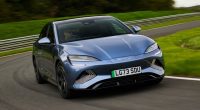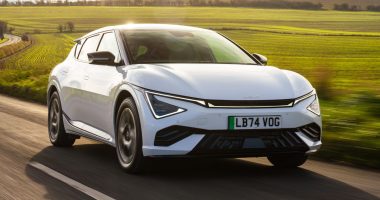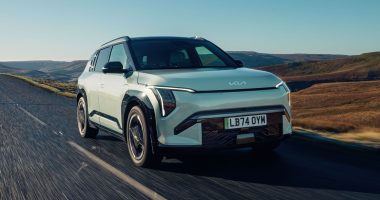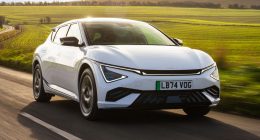The pivot towards electrification by Ford has already come at the cost of the Mondeo and Fiesta as both have been consigned to the annals of history – and from 2025 the Focus is joining them.
Despite the onslaught from crossovers and SUVs, the humble Focus – a direct replacement for the Escort – has remained a firm favourite with British buyers, its appeal strengthened by three- and five-door options, estates, a hard top, hot hatch derivatives, and motorsport-inspired ‘RS’ versions.
As a last hurrah to this spacious, stylish and economical car – which is now in its fourth-generation and relies on very mild electric hybrid propulsion – it has been treated to an up-date to keep it fighting fit against the Vauxhall Astra and Kia Ceed, Hyundai i30 and Skoda’s Octavia respectively. Assembled at Ford’s Saarlouis factory in Germany, the facelift ushers in a fresh front bumper, new headlights and a redesigned grille that comes with its own unique finish depending on the model.
There’s four in all – entry-level ‘Trend’, mid-range ‘Titanium’, sporty ‘ST-Line’ and the crossover-inspired ‘Active’ – and once a standalone trim, the ill-fated ‘Vignale’ is now a glorified option pack that costs £2,200 and includes a silver finish for the lower air dams and an alloy wheel upgrade. For housekeeping purposes, we should say it can be requested on all bar bottom-rung examples.
The makeover continues on the inside where Ford’s beefy 13.1-inch touchscreen dominates; most of the in-car functions are executed through the SYNC 4 system, including heating and ventilation functions. Physical buttons for the three drive modes (Normal, Eco and Sport), heated front window, stop/start and parking navigation have survived the cull and are grouped with the engine on/off button and radio volume dial. Big and bursting with colour, the sheer size of the multimedia display ensures that buttons can be easily picked out. They are also logically placed within the frame for quick and easy selections.
Quality is decent and the grade of materials used throughout are robust, if on the side of being too hard. So, it is fair to say this is not the car’s strongest hand, and rivals trump it in this area. A premium ‘B&O’ sound system, diamond-stitch effect heated synthetic leather seats, digital driver display and wireless charge pad that come with the Vignale pack does help to lift the ambience.
In terms of engine choice buyers are limited to one. Mercifully, the award-winning three-cylinder EcoBoost turbo petrol is a superb, rev-happy, torque-filled motor – pretty remarkable when you consider it is half the size of a 2-litre plastic milk bottle. To reduce emissions, 48-volt mild hybrid technology has been added to the Focus’s technical armoury.
Ford is slightly more generous with transmissions: a 6-speed manual that has a hot knife through butter action and an equally silky smooth 7-speed dual-clutch PowerShift alternative are what’s offered. Both send power to the front axle which, in the case of the latter, rises from 123bhp and 125lb ft to 153bhp and 177lb ft. A 2.3-litre, 276bhp four-cylinder turbo petrol is available, albeit on the range-topping ‘ST’ Focus.
On the move, the Focus remains in a league of one. In motoring journalism, the 10 second first impressions rule often applies, setting the tone for the rest of the journey. In the case of the Focus ride and handling – even with the slightly firmer sports suspension on ‘ST-Line’ examples – is so incredibly forgiving.
Apart from a little chat through the steering wheel at lower speeds and the merest rumble over coarser surfaces, this is a car that puts many two, three or even four times its price to shame. Quick steering and a wonderfully balanced front-end combine allow you to carry speed through corners with ease and confidence much like you would in a two-seater sports car.
This is, in part, helped by extending the wheelbase by five centimetres. True, in the grand scheme of things it doesn’t sound like much, but it benefits the car’s dynamics and levels of practicality. A criticism of previous generations of the nameplate, the front now accommodates two six-footers with ease and the same applies in the back where, thanks to a shallow transmission tunnel, the person who ends up sitting in the middle now has somewhere to place their feet.
Downsides? The boot is not the biggest and some care is called for when opening and closing the rear doors due to the curved rear quarter window being incorporated into these.









